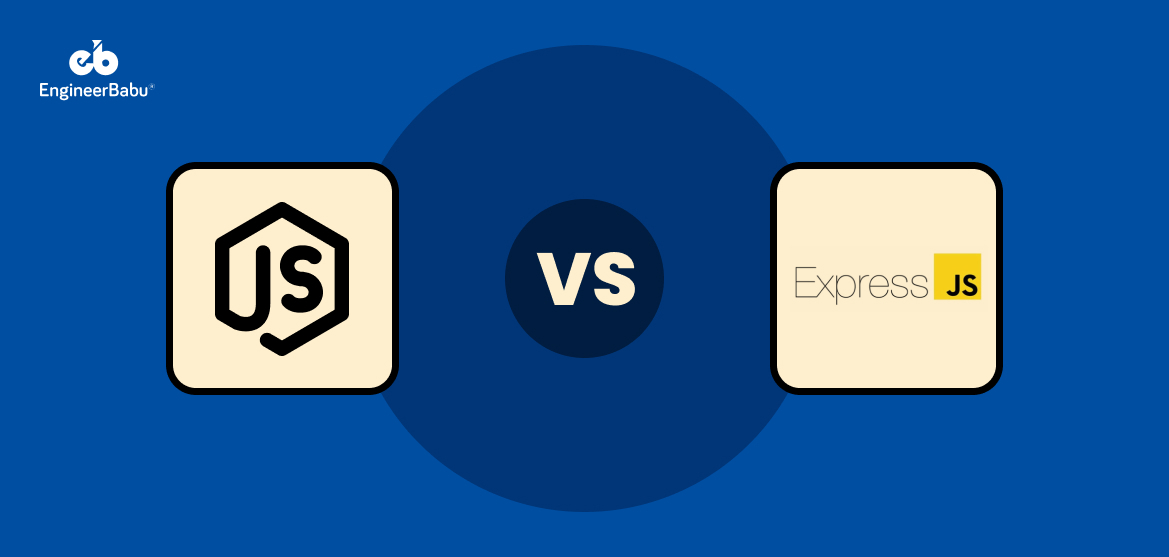Choosing the right mobile development framework is no longer just a technical decision, it directly shapes user experience, development timelines, and long-term scalability. Today, two names dominate the conversation in the cross-platform development space: Ionic vs React Native.
React Native, introduced by Meta, has rapidly become a go-to choice for brands that prioritise performance and near-native interaction. On the other hand, Ionic appeals to teams that value speed, design flexibility, and code reuse across platforms.
Although both frameworks allow developers to build apps for iOS and Android using JavaScript, their approaches and outcomes differ significantly.
So, in this blog, we will explore the core differences between React Native vs Ionic, breaking down their architecture, performance, scalability, and practical use cases. Whether you are a founder validating an MVP or a CTO leading a multi-platform roadmap, this comparison will help clarify which framework aligns better with your goals.
What is React Native?
React Native is a leading open-source framework developed by Meta that empowers developers to build cross-platform mobile applications using JavaScript and React.
In fact, it ranks as the second most widely used framework in 2024, with 32% of developers choosing it for mobile development.
Instead of relying on web-based rendering, it directly taps into native APIs. This approach enhances both performance and user experience, especially in iOS app development, where consistency and responsiveness are critical.
One of the biggest advantages of React Native lies in its ability to provide a native look and feel while maintaining a single codebase. This further makes it highly efficient for businesses aiming to launch polished apps without doubling their development efforts.
In the debate around Ionic vs React Native, performance often becomes the deciding factor. React Native’s architecture allows better access to native device features.
In short, for teams prioritising user experience without sacrificing development speed, React Native consistently proves to be a smart and scalable solution in the Ionic vs React Native discussion.
What is Ionic?
Ionic is a popular open-source framework that enables developers to build mobile, desktop, and progressive web apps using familiar web technologies, namely HTML, CSS, and JavaScript. Its architecture is based on WebView, which allows apps to run inside a browser shell on mobile devices.
As a result, this setup ensures a unified design system and faster development cycles, especially for teams already proficient in web development.
Ionic’s core strength lies in its library of pre-designed UI components and its compatibility with multiple frontend frameworks like Angular, React, and Vue. Combined with Capacitor, its native runtime, Ionic offers improved access to native device features. Thus, bridging the gap between hybrid convenience and native-level functionality.
When comparing Ionic vs React Native, it becomes clear that Ionic is particularly effective for rapid prototyping, progressive web apps, and enterprise dashboards that do not require heavy native animations. For projects driven by tight timelines or limited budgets, Ionic presents a compelling alternative.
Differences Between React Native and Ionic
Before choosing a framework, it is important to understand how each one performs under real-world conditions. Ionic vs react native, both share a common goal of cross-platform mobile app development, but their foundations, capabilities, and user experiences are fundamentally different.
The following breakdown will help you compare them side by side and decide what suits your app’s future best.
1. Architecture and Rendering Style
React Native relies on a bridge that renders UI elements directly using native APIs. This results in apps that behave closer to fully native builds.
In contrast, Ionic wraps content within a WebView, enabling a more browser-like rendering flow. Interestingly, the debate around ionic vs react native often starts with this architectural divergence, especially for performance-sensitive applications.
2. Runtime Speed and Responsiveness
Speed is a critical factor once an app gains traction. React Native delivers quick UI transitions and low input latency due to its native-layer rendering.
Although Ionic handles standard tasks efficiently, animation-heavy apps may notice a lag. However, with Capacitor, Ionic has improved its responsiveness compared to its earlier Cordova days.
3. UI Components and User Experience
Ionic provides a ready-made UI library, allowing developers to ship visually consistent designs across platforms. Meanwhile, React Native integrates native components that adapt to the host operating system’s design standards.
The ionic vs react native comparison here depends on your priorities, uniform design or native-specific look and feel. Both offer flexibility, yet their approaches vary in how they deliver the final user interface.
4. Web Compatibility and Multi-Platform Reach
Ionic is web-first in its design philosophy, which enables easier transitions from web to mobile. React Native, while mobile-focused, does support web apps through extensions like React Native Web.
This makes Ionic a better fit for teams targeting PWA or desktop versions in parallel. React Native, on the other hand, requires more configuration to reach browsers effectively.
5. Learning Curve and Developer Efficiency
For teams experienced in web development, Ionic feels intuitive and easy to adopt. Its alignment with HTML, CSS, and JavaScript lowers the technical entry point significantly. On the flip side, React Native benefits teams already proficient with React. Therefore, ionic vs react native decisions at this stage often hinge on your team’s existing skill set.
6. Plugin Ecosystem and Hardware Integration
React Native boasts a mature ecosystem backed by Meta and an active global developer base. Accessing native device features like geolocation, camera, and sensors, feels seamless and predictable.
While Ionic now uses Capacitor for better plugin support, integration depth still varies. Consequently, developers assessing ionic vs react native for complex native access tend to lean toward React Native.
7. Scalability and Long-Term Project Stability
Long-term stability is vital for scaling digital products efficiently. React Native supports modular codebases and adapts well to growing app complexity.
Ionic also scales, but its WebView base can introduce challenges in resource-intensive scenarios. So when CTOs weigh ionic vs react native for scaling across regions or user segments, performance longevity becomes central.
Comparison Table: React Native vs Ionic at a Glance
This concise, skimmable table captures the key differences between Ionic vs react native, discussed earlier. It’s designed for decision-makers who prefer clarity over jargon, and it avoids repetitive phrasing while aligning with your tone.
| Criteria | React Native | Ionic |
| Rendering Approach | Uses native APIs and components | Runs inside WebView using HTML, CSS, and JavaScript |
| Performance | Near-native performance; handles complex features well | Moderate performance; best for simpler workflows |
| UI Flexibility | Native UI components with high customisability | Pre-built UI library; fast for consistent cross-platform UI |
| Code Reusability | Reusable across iOS and Android only | Reusable across iOS, Android, and Web |
| Learning Curve | Best for React or JavaScript developers | Easier for web developers familiar with Angular or Vue |
| Plugin Ecosystem | Strong community with native integrations via Meta support | Capacitor-based plugins with improving native access |
| Web Compatibility | Limited, requires additional setup | Built-in support for web and PWA deployment |
| Scalability | Scales well for performance-critical apps | Scales well for multi-platform but may face performance limits |
| Best Fit For | Feature-rich, high-performance mobile apps | MVPs, dashboards, and hybrid apps with web-first strategy |
This comparison clearly outlines where each framework excels and where it may not fully deliver. If you are weighing these options for your next digital product, understanding their core differences can streamline your planning process.
For deeper technical guidance and tailored execution, our mobile app development services can help you evaluate, prototype, and build the right solution based on your goals.
When to Choose React Native?
React Native becomes the framework of choice when performance is non-negotiable. Apps that demand smooth transitions, rich animations, and hardware-level responsiveness benefit significantly from its native rendering approach.
Moreover, many teams also prefer it for Android-heavy deployments, especially when timelines are tight and stability is essential. In fact, for projects focused primarily on Android users, choosing a React-based stack can often reduce development friction.
This is one of the reasons why React Native plays a prominent role in modern Android app development services, it combines speed with a consistent native feel.
Also, when long-term scalability matters, React Native holds up well. Its plugin ecosystem continues to evolve, and it integrates seamlessly with CI/CD pipelines for faster rollouts.
When to Choose Ionic?
The discussion around ionic vs react native often begins with a question of priorities, speed, flexibility, or raw performance. When the goal is to build cross-platform apps quickly without investing heavily in native expertise, Ionic becomes a compelling option.
It uses familiar web technologies like HTML, CSS, and JavaScript, which makes it accessible to most frontend teams. Ionic is especially well-suited for apps where consistency across platforms matters more than deep system-level integration.
Also, dashboards, administrative panels, appointment schedulers, and progressive web apps all benefit from Ionic’s reusable UI components. Moreover, development timelines tend to shrink when teams can repurpose existing web assets for mobile.
Although it may not match React Native’s performance in animation-heavy use cases, it excels in operational efficiency. So, teams seeking speed over native finesse often find that Ionic delivers exactly what their roadmap demands.
Conclusion
Choosing between React Native and Ionic is not a matter of which framework is better, it is about which one is better for your goals. Each offers clear strengths. React Native delivers near-native performance and deeper hardware integration. Thus, making it ideal for high-performance consumer apps.
Ionic, by contrast, stands out for its flexibility, speed of development, and cross-platform reach, particularly when time and resources are limited.
In conclusion, the ionic vs react native decision depends on what your app demands today, and how you see it growing tomorrow.
Whether you are building a scalable enterprise platform or launching a quick MVP, aligning technology with your roadmap is critical. If clarity still feels out of reach, tapping into expert guidance can simplify the next step.
Frequently Asked Questions (FAQs)
1. Which is easier to learn, React Native or Ionic?
Ionic is generally easier for developers familiar with HTML, CSS, and JavaScript. React Native has a steeper learning curve unless the team already works with React.
However, both frameworks offer strong documentation and active communities for support. Ultimately, your existing tech stack often determines which one feels easier to adopt.
2. Can I build a web app using React Native or is Ionic better for that?
Ionic is built with web-first technologies, making it ideal for progressive web apps and hybrid web-mobile interfaces. React Native is primarily mobile-focused, and while web support exists, it requires additional configuration.
If web deployment is part of your plan from day one, Ionic often delivers better flexibility.
3. What kind of apps benefit most from React Native?
React Native is best suited for mobile applications that require native performance and real-time interactions. It works well for streaming apps, eCommerce platforms, and products with custom animations or offline capabilities.
Apps that need deep hardware integration also benefit from its direct API access. It is a solid choice for high-traffic consumer apps.
4. How do I decide between Ionic vs React Native for my project?
The ionic vs react native decision depends on the app’s purpose, required performance, and target platforms. Ionic is ideal for quick launches, simple interfaces, or multi-platform use.
React Native works better for feature-rich apps demanding native UI precision. Evaluate based on team skills, timelines, and user expectations.
5. Is Ionic still relevant in 2025, or is React Native taking over?
Despite React Native’s popularity, Ionic remains a strong contender in the cross-platform space. Each serves different needs. While React Native handles performance-focused apps, Ionic thrives in multi-platform projects.
Many product teams today compare Ionic vs react native not by trends but by project fit and long-term needs.




